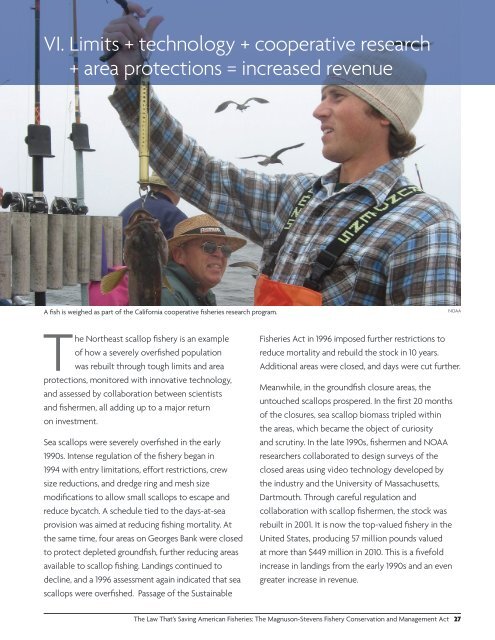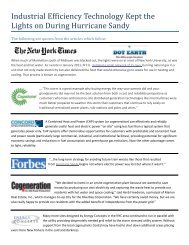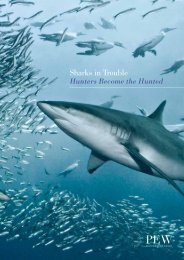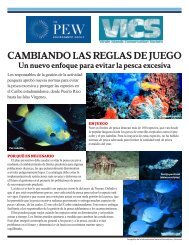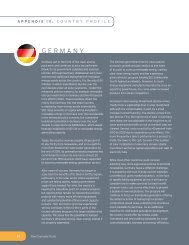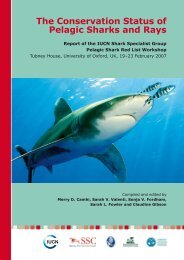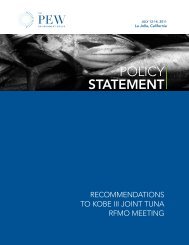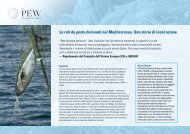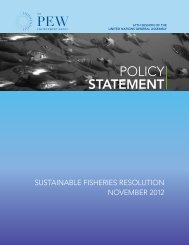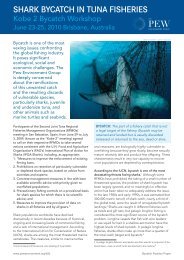The Law That's Saving American Fisheries - Ocean Conservancy
The Law That's Saving American Fisheries - Ocean Conservancy
The Law That's Saving American Fisheries - Ocean Conservancy
You also want an ePaper? Increase the reach of your titles
YUMPU automatically turns print PDFs into web optimized ePapers that Google loves.
VI. Limits + technology + cooperative research<br />
+ area protections = increased revenue<br />
A fish is weighed as part of the California cooperative fisheries research program.<br />
NOAA<br />
<strong>The</strong> Northeast scallop fishery is an example<br />
of how a severely overfished population<br />
was rebuilt through tough limits and area<br />
protections, monitored with innovative technology,<br />
and assessed by collaboration between scientists<br />
and fishermen, all adding up to a major return<br />
on investment.<br />
Sea scallops were severely overfished in the early<br />
1990s. Intense regulation of the fishery began in<br />
1994 with entry limitations, effort restrictions, crew<br />
size reductions, and dredge ring and mesh size<br />
modifications to allow small scallops to escape and<br />
reduce bycatch. A schedule tied to the days-at-sea<br />
provision was aimed at reducing fishing mortality. At<br />
the same time, four areas on Georges Bank were closed<br />
to protect depleted groundfish, further reducing areas<br />
available to scallop fishing. Landings continued to<br />
decline, and a 1996 assessment again indicated that sea<br />
scallops were overfished. Passage of the Sustainable<br />
<strong>Fisheries</strong> Act in 1996 imposed further restrictions to<br />
reduce mortality and rebuild the stock in 10 years.<br />
Additional areas were closed, and days were cut further.<br />
Meanwhile, in the groundfish closure areas, the<br />
untouched scallops prospered. In the first 20 months<br />
of the closures, sea scallop biomass tripled within<br />
the areas, which became the object of curiosity<br />
and scrutiny. In the late 1990s, fishermen and NOAA<br />
researchers collaborated to design surveys of the<br />
closed areas using video technology developed by<br />
the industry and the University of Massachusetts,<br />
Dartmouth. Through careful regulation and<br />
collaboration with scallop fishermen, the stock was<br />
rebuilt in 2001. It is now the top-valued fishery in the<br />
United States, producing 57 million pounds valued<br />
at more than $449 million in 2010. This is a fivefold<br />
increase in landings from the early 1990s and an even<br />
greater increase in revenue.<br />
<strong>The</strong> <strong>Law</strong> That’s <strong>Saving</strong> <strong>American</strong> <strong>Fisheries</strong>: <strong>The</strong> Magnuson-Stevens Fishery Conservation and Management Act 27


